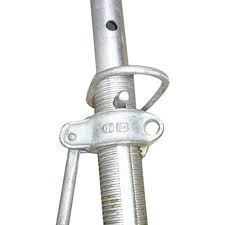Nov . 24, 2024 20:56 Back to list
Innovative Solutions for OEM Jump Form Formwork Systems and Applications
The Evolution and Importance of OEM Jump Form Formwork in Construction
In the ever-evolving construction industry, the need for efficient, safe, and reliable systems has become paramount. Among the various innovations that have emerged, the OEM (Original Equipment Manufacturer) jump form formwork stands out as a pivotal advancement. This specialized formwork system is designed primarily for high-rise buildings and critical construction projects, where speed and safety are essential. This article explores the significance, benefits, and applications of OEM jump form formwork in modern construction.
Understanding OEM Jump Form Formwork
OEM jump form formwork is a sophisticated construction framework that allows for the rapid vertical progression of concrete structures. Unlike traditional formwork systems that are labor-intensive and time-consuming, jump forms are designed to be moved up during the construction process, enabling continuous work on upper floors without the need for extensive reconfiguration. This system is typically fabricated according to specific project requirements, which is where its designation as OEM comes into play. Manufacturers produce bespoke jump form systems that cater to unique structural demands, providing a tailored solution for complex building designs.
Advantages of OEM Jump Form Formwork
1. Speed of Construction One of the most noteworthy benefits of OEM jump forms is their efficiency in speeding up the construction process. The ability to move the formwork vertically as sections are completed eliminates downtime and significantly reduces the overall time needed for construction.
2. Enhanced Safety Safety is a critical concern in construction, particularly when working at heights. OEM jump forms provide a safer working environment for laborers, minimizing the risks associated with moving traditional scaffolding and reducing the likelihood of accidents during the construction phase.
3. Improved Concrete Quality The use of integrated jump form systems ensures that concrete is poured in a controlled and uniform manner. This consistency contributes to higher structural integrity and durability, which is essential for high-rise buildings subjected to various environmental stresses.
oem jump form formwork

4. Cost-Effectiveness While the initial investment in OEM jump form formwork may be higher compared to conventional methods, the long-term savings are significant. Reduced labor costs, minimized material wastage, and the accelerated construction timeline lead to overall cost savings and increased profitability for construction projects.
5. Versatility OEM jump forms can be designed to accommodate a wide range of architectural designs and structural requirements. From curved surfaces to varying floor plans, the adaptability of jump forms makes them suitable for diverse projects, including commercial skyscrapers, residential complexes, and infrastructure developments.
Applications in Modern Construction
The versatility of OEM jump form systems makes them ideal for numerous applications. High-rise buildings are the most prominent examples, where these forms facilitate rapid vertical construction while ensuring compliance with safety standards. Additionally, jump form technology is utilized in the construction of bridges, towers, and other large-scale structures that require precision and robustness.
Moreover, the trend toward sustainable construction practices has also seen the incorporation of jump forms in projects aimed at reducing environmental impact. By facilitating faster builds, these systems help conserve energy and reduce the overall carbon footprint associated with lengthy construction processes.
Conclusion
In conclusion, OEM jump form formwork represents a significant leap forward in the construction industry, addressing the challenges of speed, safety, and structural integrity. As urbanization continues to accelerate and the demand for high-rise buildings grows, the importance of innovative solutions like jump forms cannot be overstated. Embracing this technology allows construction companies to not only improve operational efficiency but also contribute to creating safer and more sustainable urban environments. As we look to the future, the role of OEM jump form formwork will undoubtedly become more critical, shaping the skyline of our cities for years to come.
-
High-Quality U Head Jack Scaffolding – Reliable Scaffolding Jack Head Manufacturer & Factory
NewsJul.08,2025
-
High-Quality I Beam H20 Leading Timber Beam H20 Material Factory, Exporters & Manufacturers
NewsJul.08,2025
-
High-Quality Powder Coating Steel Formwork - Durable & Corrosion Resistant Solutions
NewsJul.07,2025
-
Inclined Column Formwork Supplier – Durable & Precise Solutions for Unique Structures
NewsJul.07,2025
-
High-Quality Water Stop Solutions Trusted Water Stop Company & Suppliers
NewsJul.07,2025
-
High-Quality Formwork Material Supplier Reliable Manufacturer & Factory Solutions
NewsJul.06,2025